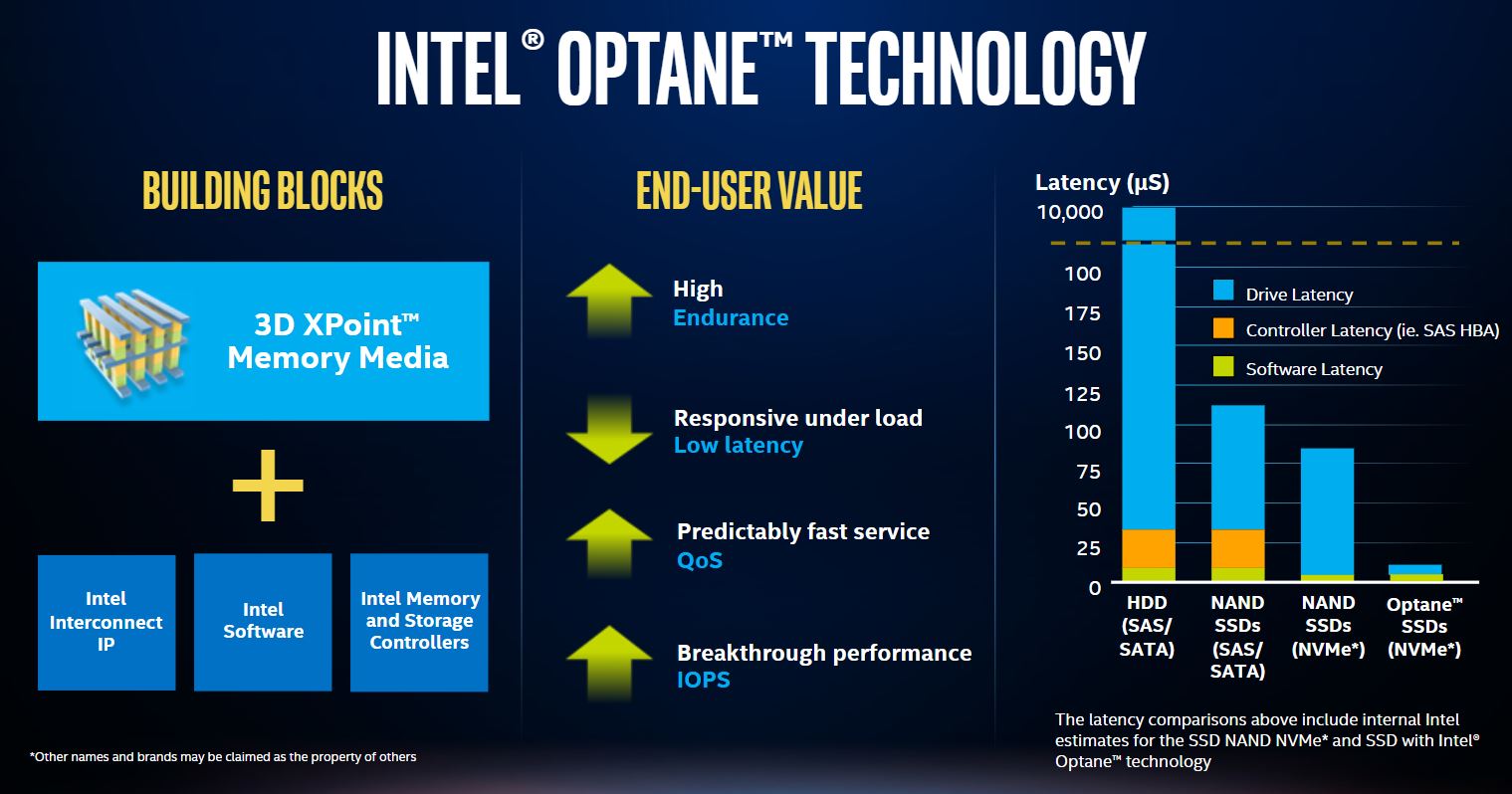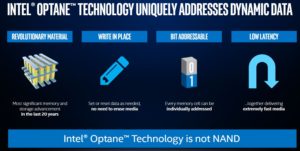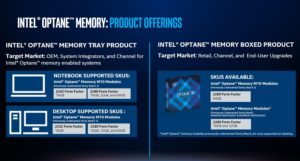

We will explain everything you need to know about Intel Optane memory in a very concise point form.
Intel Optane is special memory + software + memory controllers. The basis of Optane is extremely fast Intel proprietary “3D XPoint” memory that does NOT get erased when the power is removed (i.e. it has ‘persistance’). This means 3D XPoint memory can be used for hard drive storage when it is used in combination with special software and controllers that Intel bundles as “Optane”. Intel Optane will help it compete with the best AM4 motherboards sporting AMD CPU’s.
Intel Optane DC is a new derivative to Optane that will be made available in Data Center (hence the name “DC”) servers as extremely fast memory.


3D XPoint is the memory used in an Optane system. 3D XPoint is just part of the Optane ‘Ingredient Brand’. Intel 3D XPoint (which is used exclusively in Optane) is not bases on NAND memory; it is a whole new logic. See the graphic to the right for more details.
This will change, but in 2018 / 2019 Intel Optane connects to an M.2 connector on the on the PCIe bus or as an add-in card in a PCIe slot. Note that the PCIe add-in cards are already being dropped as nearly all new computers have M.2 slots.


This will change, but in 2018 / 2019 Intel Optane DC will connect in a DDR4 connector.
There are three key differences of note with between an SSHD (spinning disk with a lot of cache memory built into it) and Intel Optane:
Most Solid State Hard Drives (SSHD’s) are about 10% faster than a standard spinning disk but Optane can boost that same spinning disks performance up to 200%.
The answer depends on what memory (NAND vs …) and connectors (PCIe or SATA) are used on the traditional SSD. However the chart the to the right shows Intel’s benchmarking.
Eventually Optane will completely replace traditional SSD’s but there is no road-map for that today.
As of 2018 the answer is yes, but there are new motherboards on the way soon with BIOS / UEFI settings that support configuring Optane before the Operating System is loaded.
All versions of 64 bit Windows 10 support Optane and no other operating systems do. This means that Intel has not produced, and has no plans to produce, drivers for Windows 7, 8 or Linux.
No. Intel Optane requires an M.2 slot, BIOS / UEFI support and Intel Rapid Storage Technology (RST) software installed on 64bit Windows 10 to operate.
No. Optane is currently limited to a single module.
Generally the answer is yes, Optane is simply caching what is on a spinning disk so it can be removed without corrupting files. This is true if, like nearly all 2018 implementations you have added Optane after the OS was installed and added Intel RST to enable it. However, if you configured Optane in the BIOS and then installed your Operating System, removing the Optane module will corrupt / lose some files.
Intel’s research shows that while adding memory is nearly always a good thing, it will both cost less AND provide a bigger performance boost to add in Optane. See the chart to the right.
Yes; with Intel RST software version released on October 2018 you can now ‘pin’ either specific programs or files and force them to run from the Optane cache and not your spinning disk.
If you still have Intel Optane questions, the gallery of images from a recent Intel Conference we attended may be helpful
This website uses cookies.